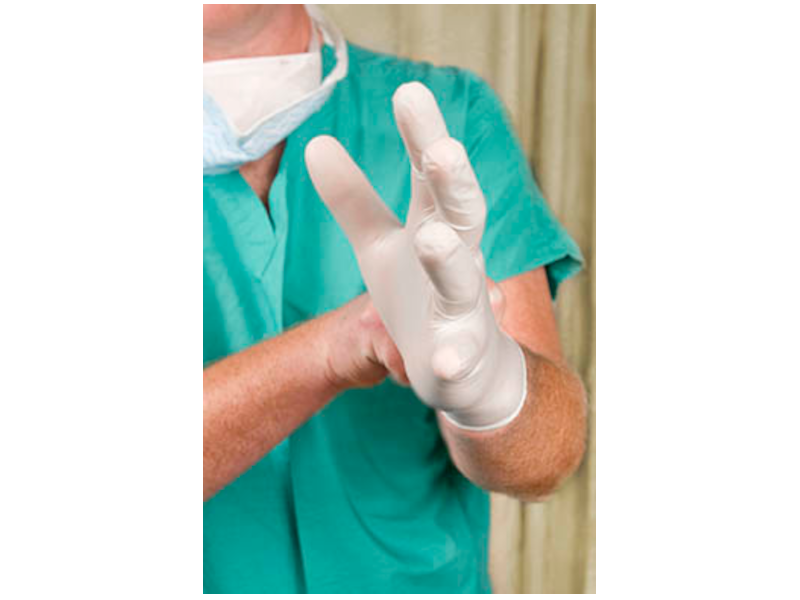The Ryan White Program at Augusta University allows people to seek and receive high quality HIV-related medical care regardless of their ability to pay.
Researchers have made great strides in developing treatment that allows patients to manage the virus, that once offered its host little more than a death sentence. However, there is no magic pill that cures it. Medication can’t heal all of the damage HIV caused while undiagnosed and running through the body. It can prevent transmission and future illness, but it can’t do it alone.
Success depends upon a conglomerate of self-care tactics, according to HIV Outreach Coordinator Raven Wells.
“Slowly, I think people are recognizing that it does not have to be a death sentence,” she said.
Taking prescribed medication is only a part of managing the virus that affects more than 1,600 people out of every 100,000 in the CSRA.
There are several key factors that determine a patient’s outcome, including early testing, consistency in taking prescribed medication, nutrition management, good sleep habits, exercise and maintaining a strong support system.
[adrotate banner=”30″]
“If your stress level is high, then we know that can affect you as well,” Wells said. “All of those things play a part significantly.”
The most critical stage in stopping HIV in its tracks is testing. The sooner the virus is detected, the less opportunity it has to damage the human body.
“So, you want to be screened as soon as possible after exposure because at that point we may be able to catch it before the virus really starts to attack the immune system,” Wells said. “Initially, when you first get infected, the virus runs rampant.”
An initial spike of HIV involves the virus entering and “hanging out” inside the host’s body. The immune system fights back, launching an attack on the foreign threat, she explained.
“The problem is that the cells don’t realize that the virus is waiting for them to come so it can use those cells to make more of itself and then the white blood cells die off,” Wells said. “So, you are ending up with a higher viral load and less of your immune response.”
The internal battle leaves the body without the tools it needs to respond to other infections, some of which require lengthy recovery periods or result in permanent damage.
An average person may have 1,000 white blood cells, also known as T-cells, the body uses the T-cells to attack anything that is foreign to the person’s body. When that number stays high, it provides a good defense. The lower the number of T-cells, the less the body can defend itself against illnesses it is exposed to on a daily basis, according to Wells.
[adrotate banner=”23″]
“That is what the immune system is there for,” she said. “And it is constantly adjusting and making antibodies and whatever else it needs to do to defend us so we can carry on.”
Wells does not underestimate the virus. It has the upper hand because it knows how to cripple the human body’s most important defense, she said. If two HIV cells enter the body and 15 white blood cells rush to fight the invaders, the two HIV cells infiltrate one of the T-cells and use it as a house to make 10 more of itself. The houses burst open and release many viral cells to invade healthy cells in the body.
Early testing is imperative in stopping the spread of the virus. The number of HIV cells that enter the body upon exposure varies, depending on how far advanced the virus is in the infected person.
“The more cells they have, the more they can pass,” Wells said.
Although there is no cure for HIV, medications assist patients in leading healthy lives. Testing plays a part in what medications are prescribed, often depending on a person’s viral load.
Antiretrovirals stop HIV from replicating. Integrase strand transfer inhibitors stop production of the enzyme that HIV uses to infect T-cells. Often, INSTIs work best for people recently infected with the virus, offering the best results with the least amount of side effects.
The Centers for Disease Control and Prevention recommends that everyone between the ages of 13 and 64 get tested at least once as part of routine health care. For those at higher risk, CDC recommends getting tested at least once a year. People should not wait until they feel sick or exhibit symptoms.
“No one is exempt. Some people are at higher risk than others, of course,” Wells said. “We want to make sure we are focusing on the higher risk groups, but HIV is an equal opportunity infector.”
[adrotate banner=”19″]
Wells said even if teenagers are not sexually active, it’s a good idea to teach that HIV testing is a responsibility that comes with having sex.
COVID-19 stopped pop-up HIV testing tests conducted by the Ryan White Program. However, the grant-funded nonprofit accepts appointments for testing at no charge. Free kits are available from several pharmacies in the CSRA for people who wish to test in the privacy of their own homes.
Stigma attached to the virus remains a barrier to testing. Many times, a positive result is met with housing and job discrimination. Sometimes it means the end of relationships, Wells said.
“There is fear, but fear of what?” she asked rhetorically. “Not dying of HIV. There is medicine for that.”
Still HIV is prevalent in the CSRA and more people need to get tested, Wells said. Many positive cases she sees involve heterosexual relationships.
“It’s not a one-size fits all,” she said. “We are still getting men having sex with men, but we are seeing plenty of straight people getting HIV.”
Wells believes the only way to stop the stigma that prevents HIV testing is to continue to have uncomfortable conversations about the virus.
More information about the Ryan White program and where to get free testing kits is available at CSRAsafetynet.org or by calling 706-721-4463.
Shellie Smitley is a staff writer for The Augusta Press. Reach her at shellie@theaugustapress.com
[adrotate banner=”44″]












